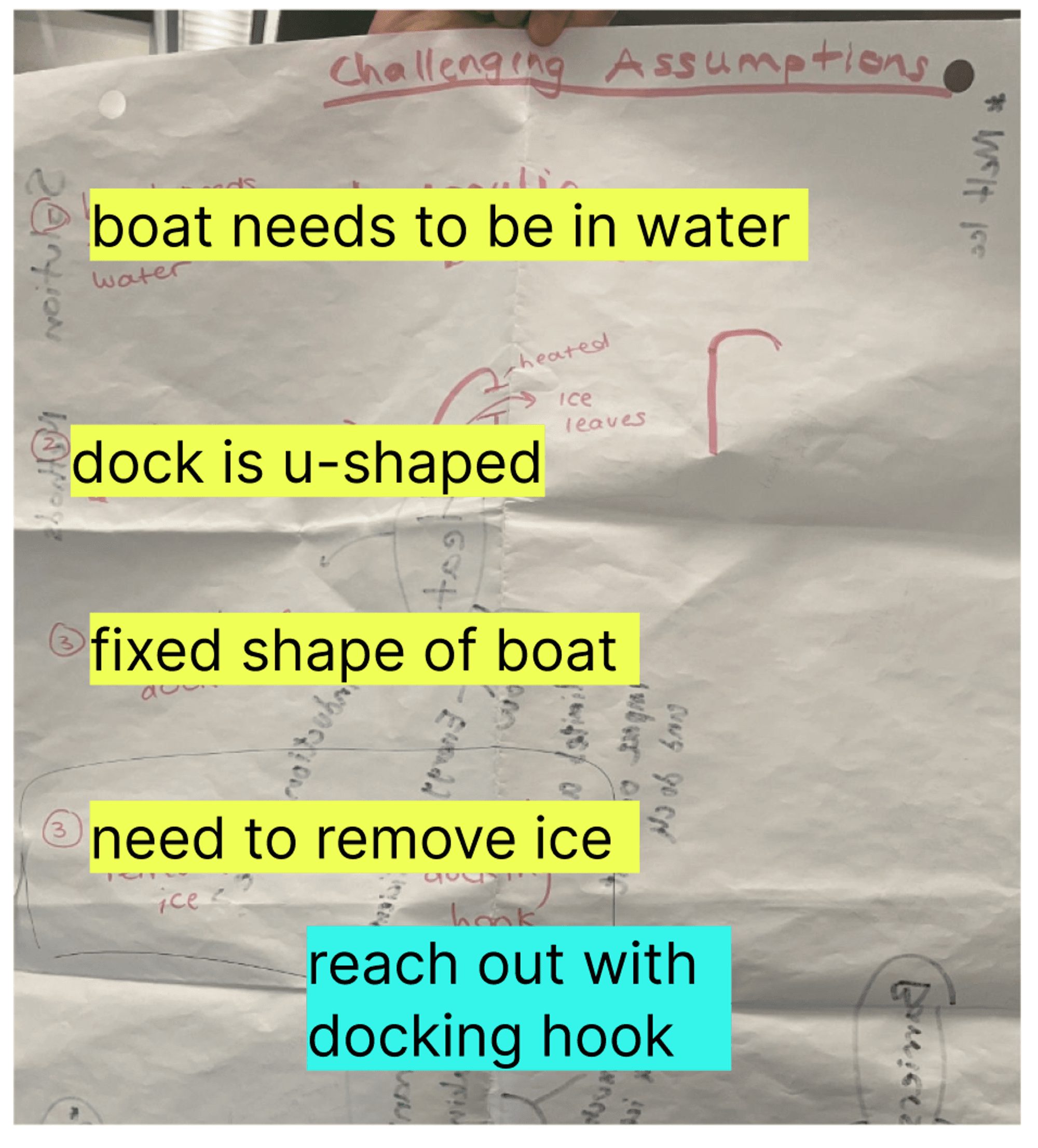Overview
Challenging assumptions is a diverging tool that lists all assumptions you're team is making about a problem. With each assumption, you can begin to think about solutions that break free from those assumptions.
The Process
The process is as simple as starting from the question, what are we assuming must be true?
My Experience
My Praxis II team utilized challenging assumptions at the end of our diverging process to identify any solutions we may have missed.

The exercise was a fun activity to list crazy ideas that are typically outside the scope of Praxis II. For example, we thought of a platform that would lift the boat out of the water and above all ice in the dock. One reasonable result from the activity was the idea of reaching out with the docking hook to pull the ferry. This arises from the assumption of 1) the dock being a fixed structure and 2) the need for our solution to remove ice. The process did not lead to any changes in our candidate designs but was still useful to give confidence around the extensiveness of our diverging process. It also helped us further justify why we made assumptions we made. The common justification is removing assumptions like the dock’s shape and the need to remove ice expands the design space too much, making our framing less clear.
This process aligns with one of my favourite mindsets, 10x thinking. Similar to challenging assumptions, 10x thinking forces you to completely rethink how a solution may work by making drastic changes to solve the problem. Instead of reducing the ice in the dock by 10%, how may we reduce it by 10x? This mindset, popularized by X, The Moonshot Factory (opens in a new tab), aligns with my values of innovation and impact. Challenging assumptions is a structured way of thinking 10x to arrive at out-of-the-box solutions.